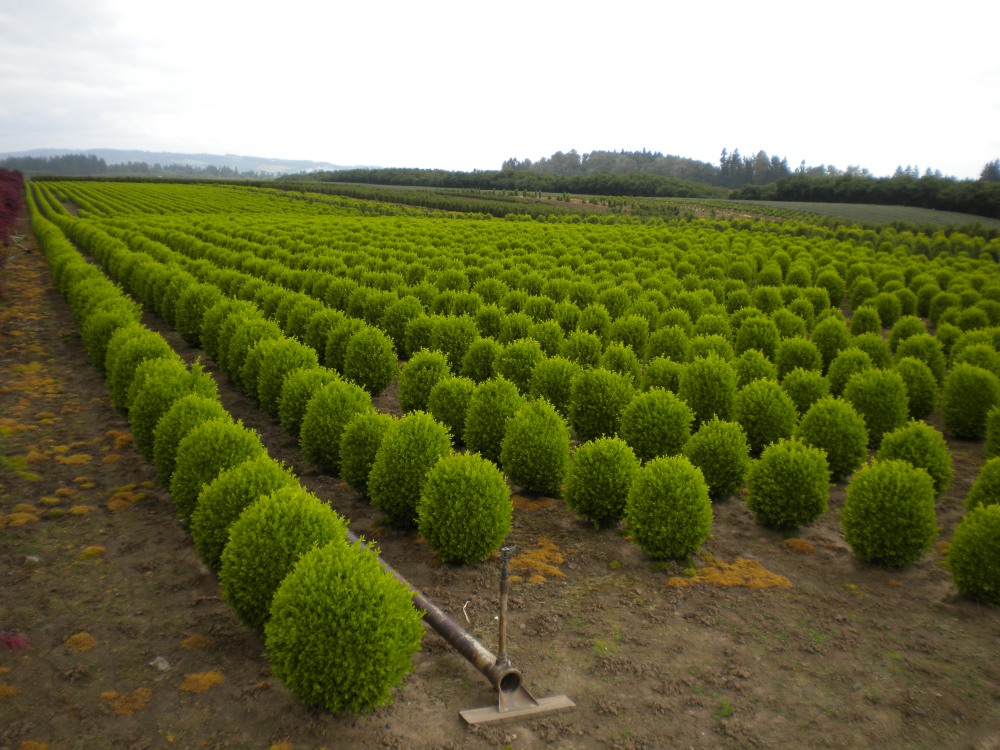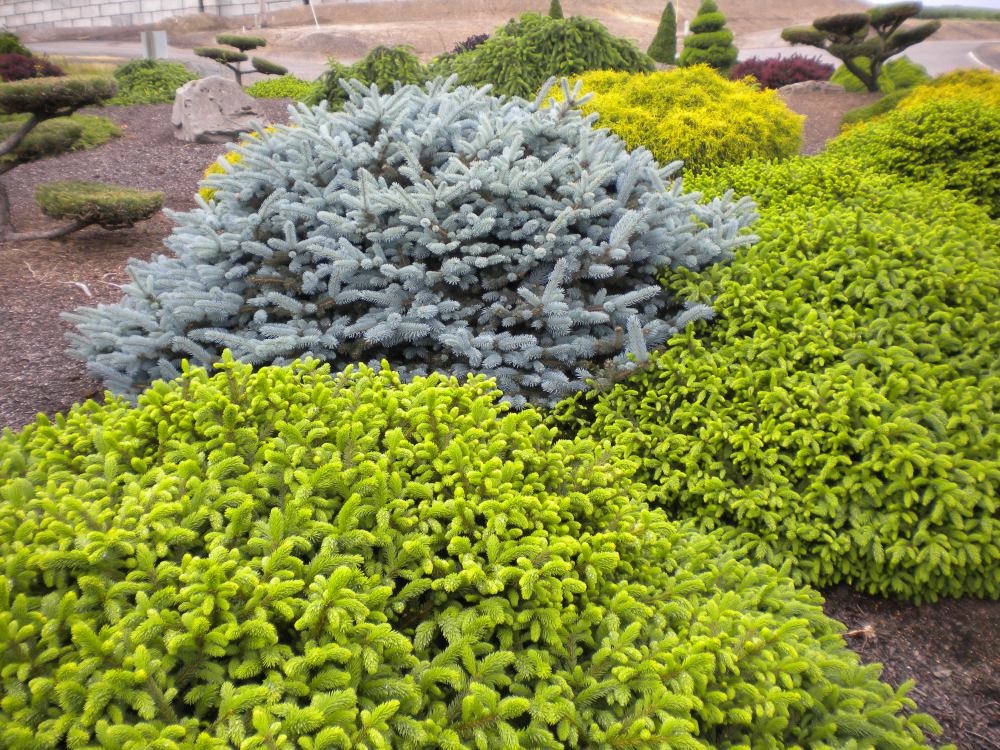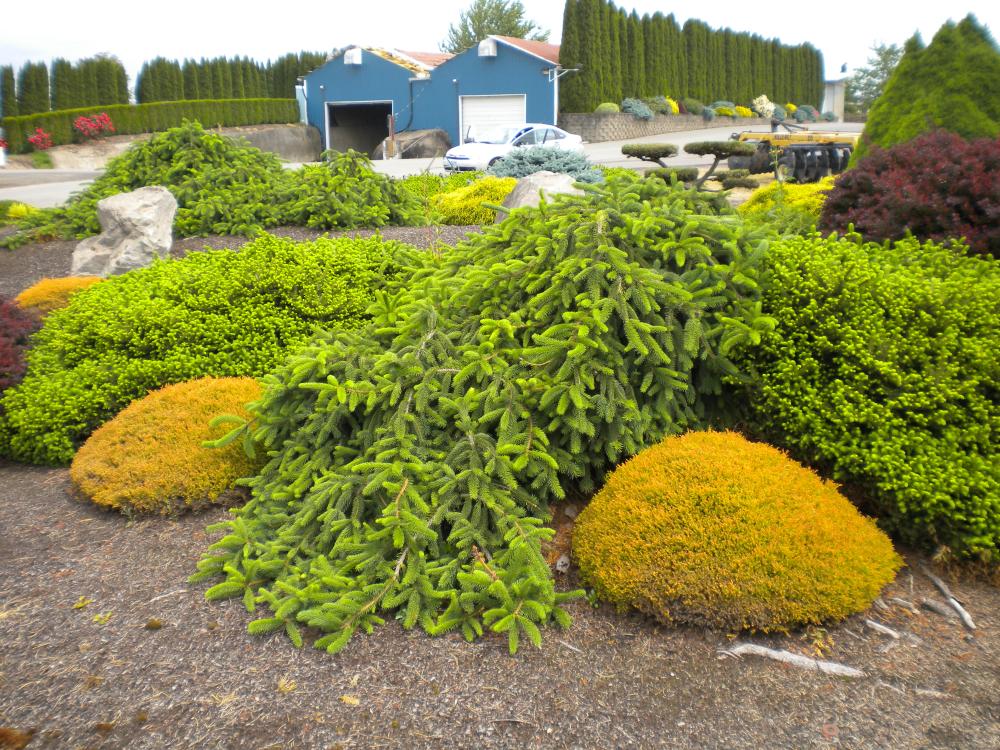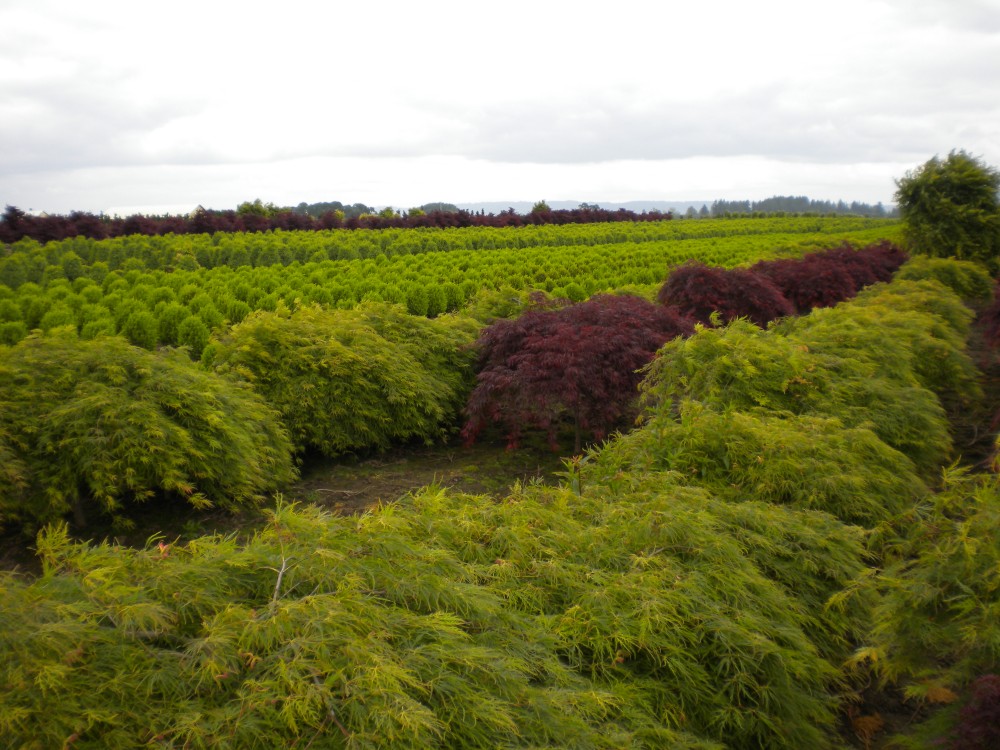Touring nurseries and buying plants becomes a bit ho-hum after you have seen the same hollies and azaleas for thirty years. Not actually the same plants, of course, but squared off blocks of hundreds and often thousands of the same plant, one row after another for hundreds of acres. A field of a hundred thousand one gallon photinias can be awe inspiring, but sleep inducing. After a few days of touring there is a chance you will recall the plants at one nursery from the other, but after two weeks the plants become a blur. So, you take notes, listing each plant and evaluating it with an arbitrary rating so that you are able to make competent decisions months later.
I can’t say that Oregon is completely different. There are mind numbing fields of boxwoods (a field of thousands of twenty four to thirty inch Buxus sempervirens suffruticosa, above) and laurels where every plant is identical, but there are also Japanese maples and dwarf spruces, cypresses and cedars (Cedrus deodora ‘Karl Fuchs’ below). The blues and reds are more vivid than on the hot and humid east coast, which brings up my current favorite topic. While the east was sweltering in one hundred degree heat last week, Oregon was cool, almost cold. I wear shorts and a light shirt three hundred days of the year, from thirty to a hundred degrees, but after becoming acclimated to the recent hot temperatures, the shorts stayed in the suitcase last week.
Oregonians are suffering. The weather has been cooler and rainier than anyone can remember, and plant growth is a month behind normal. Each year my touring partner and I look forward to the strawberries and berries that grow in every other field that isn’t planted in nursery stock, grass seed, or wheat, but last week there were no berries, only blooms. We thoroughly enjoyed our daily calls back to the office to remind everyone how cold we were, while night time lows in the east were twenty degrees warmer than Oregon’s high for the day.
Weather is not the only trouble for nurserymen in Oregon. The persistent recession has hit nursery related businesses throughout the country, but Oregon growers have been troubled by over supplies as well as slow sales. The nursery in the above photo has row after row of Japanese maples and Globosa blue spruces, but as we look closer the spruce have grown into each other so that the edges are brown, ruining every plant. The columnar spruce are okay, but the maples have shaded each other and many lower branches have died. All should have been dug a year earlier, but there was no market for them.
The long rows of Japanese maples in the above photo are the uncommon Lion’s Head (Acer palmatum ‘Shishigashira’). The trees are nearly eight feet tall, and magnificent. There are four or five rows of thirty or forty trees each, as well as rows of six and four foot tall trees. In a peak year the demand for Lion’s Head maples at a large Japanese maple grower is twenty plants or less, so there is no hope that the hundreds in this nursery will be sold.
On a more cheerful note, I’ve found the next Japanese maple for my garden. There are twenty-one maples already, and my wife says she’s going to learn to operate a chainsaw if I plant any more trees. But, the Floating Cloud maple (Acer palmatum ‘Ukigmo’, closeup of foliage above, and in the nursery, below) is too good to pass up.
Below are more photos that I hope you’ll enjoy. Mouse over the photos to read the caption, and click to expand.



This Floating Cloud Maple is simply gorgeous! I hope you will be adding it to the Meadow Farm nursery stock so I can add it to my garden as well!!!
The supply is quite limited, but I’ll get as many as I can. It surprises me that generally there is little demand for variegated leaf Japanese maples. The variegated ‘Butterfly’ often sits in the garden centers while hundreds of red leafed maples are sold. I’m sure we’ll be able to get a handful next spring.
I think since you have too many plants at home you should dig some up and transplant them at my house. Otherwise, you could plant your new plants at my house and come visit them. : – )
Your garden looks beautiful from all of your previous posting pictures.
It’s too bad Oregon is too far to drive for a road trip to pick up plants for Maryland.
My wife suggest that I should plant on our neighbor’s property since she thinks ours is full. It will surprise you how many plants can be fit into an area if you are properly motivated, and I expect to be planting for many more years.